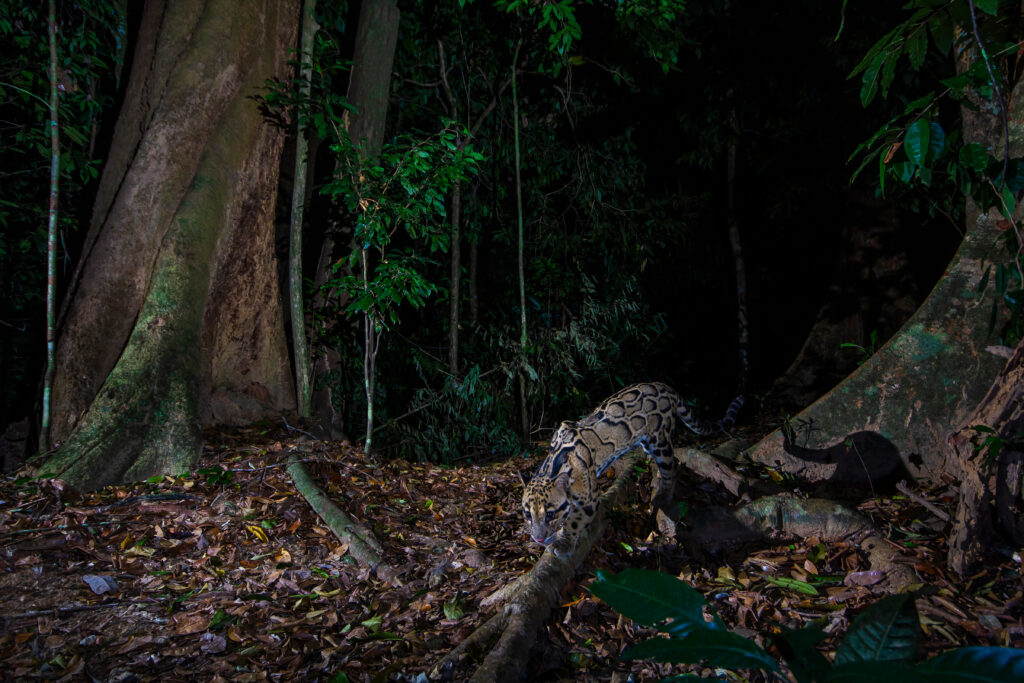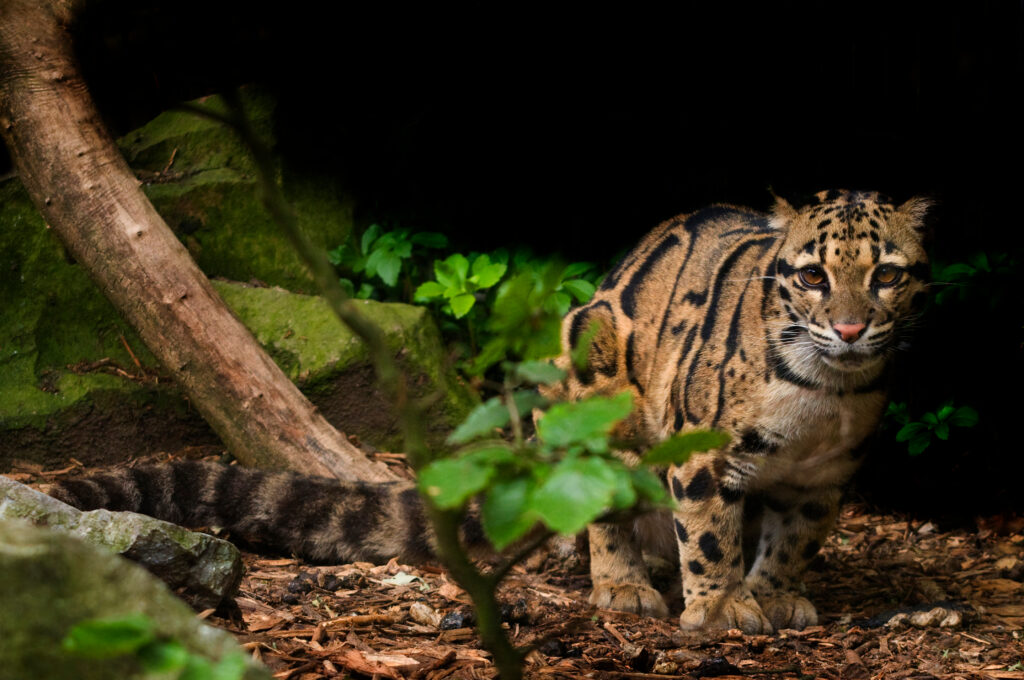How our new research is providing a clearer picture of Asia’s clouded leopard
Of Asia’s five species of big cats, the clouded leopard is the least studied. Dr. Rinjan Shrestha, WWF-Canada’s lead specialist in Asian big cats, is shedding some light on this mysterious feline and the unique research that we’re supporting to better understand and protect them.

Have you have ever seen a clouded leopard in the wild?
I’ve seen a clouded leopard only once. It was a rare encounter and lasted for a brief moment while we were setting up camera traps for common leopards in Nepal. They perfectly blend into the background landscape, so I was only able to spot the cat when it moved suddenly. But our camera traps have been able to capture their images both in Nepal and Bhutan.
How does the clouded leopard compare to Asia’s other big cats?
Clouded leopards are the smallest of all the big cats and are named after their defining feature: large cloud-shaped markings. In South Asia, they are found in the dense tropical and subtropical forests along the Himalayan foothills in between snow leopard and tigers’ ranges. Unlike tigers and snow leopards, they spend a considerable amount of time above ground in tree branches.
Like other big cats, clouded leopards are threatened by habitat loss and poaching. The dense tropical forests they inhabit are undergoing some of the world’s fastest deforestation. They are also killed by poachers to trade their body parts on the black market.
How are clouded leopard populations faring?
We do not precisely know how many clouded leopards are out there in the wild. Most biologists believe there are less than 10,000 — and their population is declining, dropping by an estimated 30 per cent over the past two decades.

Clouded leopards are least studied of Asia’s big cats. How is WWF helping address that research gap?
WWF-Canada, in partnership with WWF- Bhutan, supported research using camera traps to not only get a better idea of how many clouded leopards there are, but to ensure we’re using the right methods to survey their population in the first place.
While initially the research team aimed to collar and track 10 clouded leopards, they proved elusive. The project was modified to include five different wild cats: clouded leopard, common leopard, tiger, marbled cat and leopard cat over the next two years.
How does this research differ from how wild cats have traditionally been surveyed?
Camera traps are one of the most used techniques to monitor wild cat populations. Normally they are placed on trails and other areas where we think cats are most likely to visit. But what if our assumptions are wrong? For example, the age or sex of a wild cat may affect the likelihood of capturing them in these locations. So, to ensure we aren’t introducing biases into our data and population estimates, researchers compared camera traps placed in random locations with those on trails.
Can you share the results of the study and what they could mean for the future of clouded leopards?
The results showed that the traditional method of deploying camera traps on trails favoured males, who may prefer trails for travelling long distances. The randomly placed camera traps were more likely to capture females, who may be avoiding males and other large predators while rearing their cubs. To get the most accurate estimates, the study recommends combining both random and trail camera deployments in the future.
Eventually, we hope this research will help us develop the first-ever conservation management plan for clouded leopards in South Asia.

